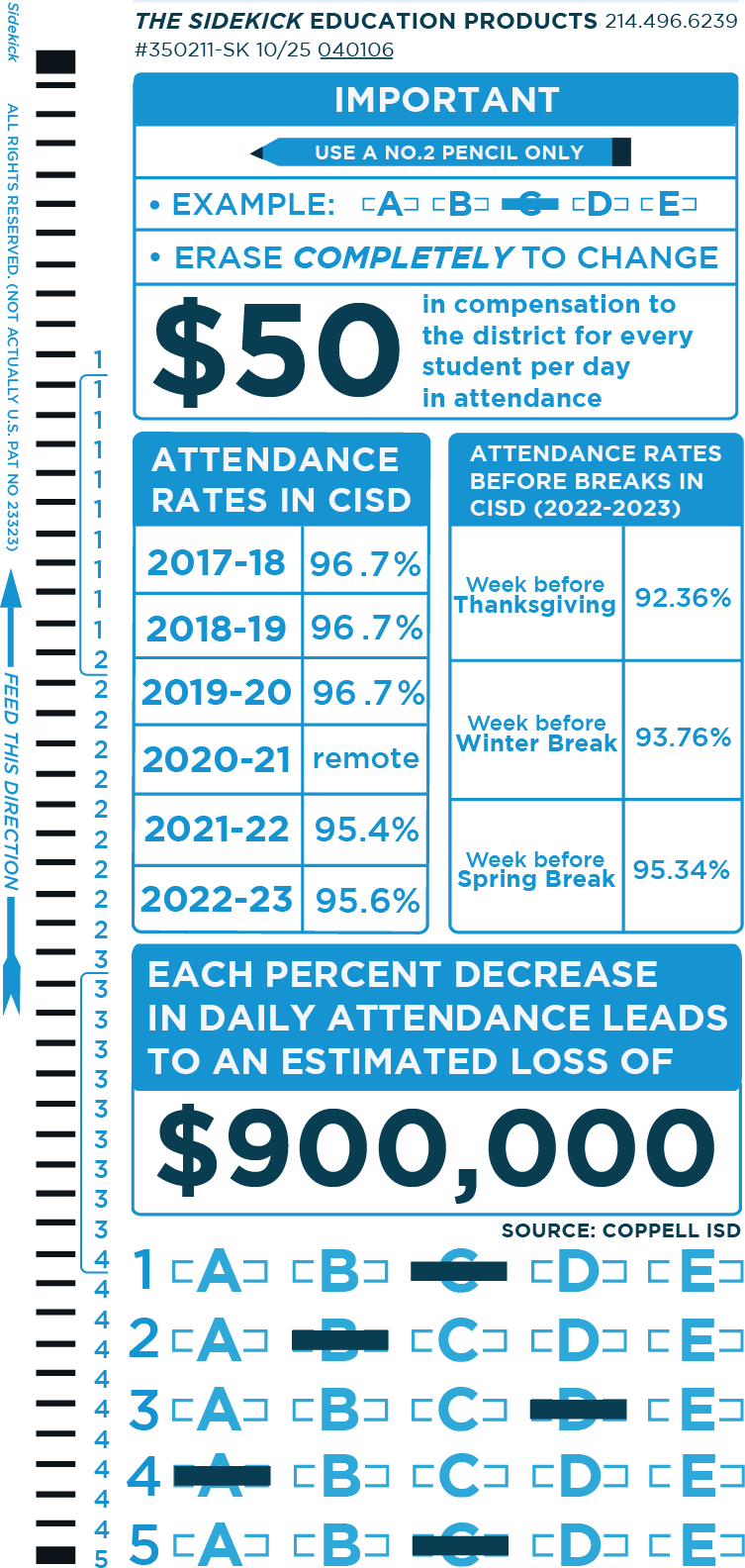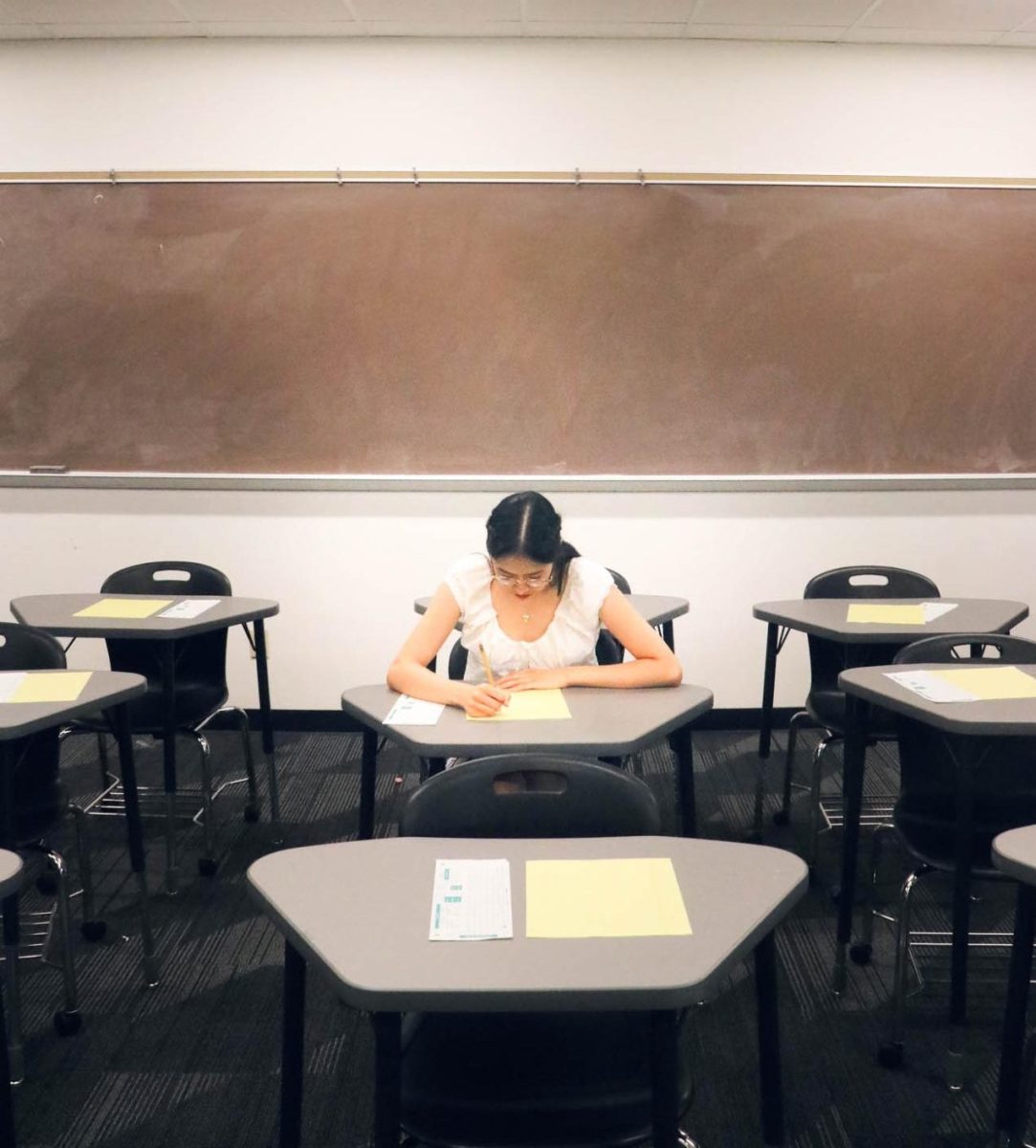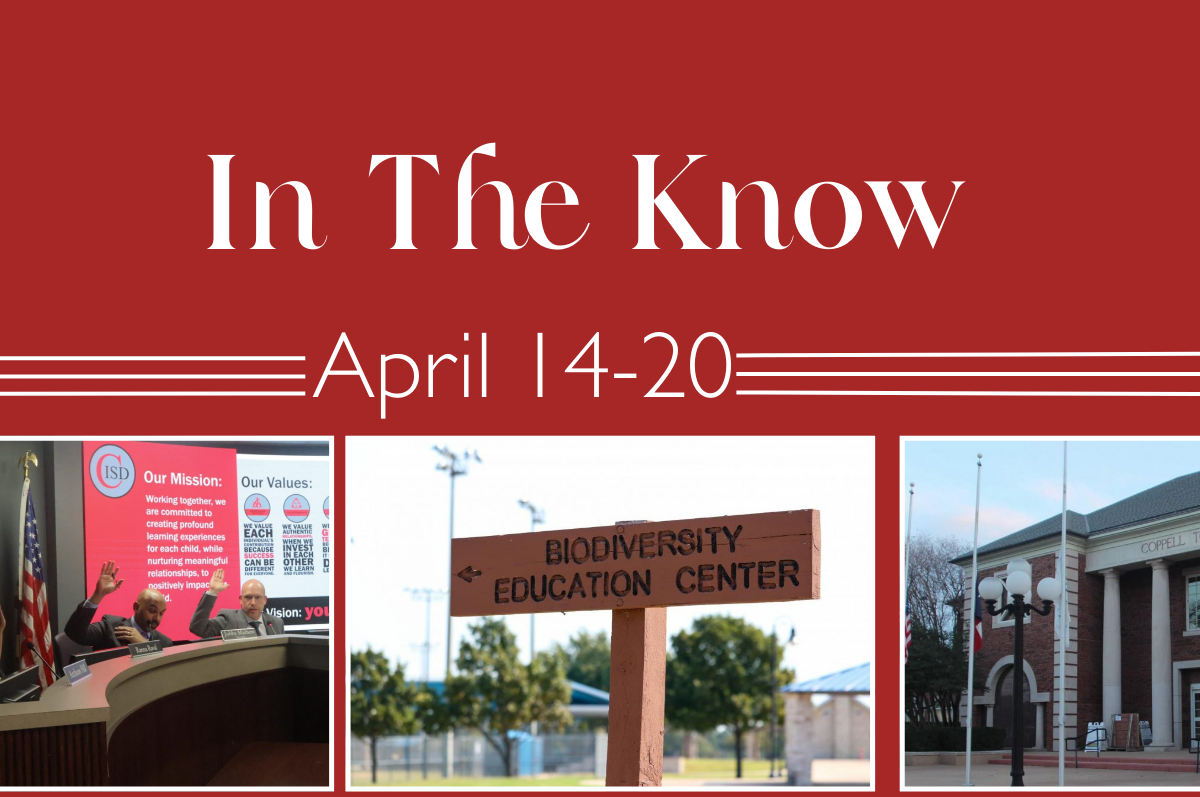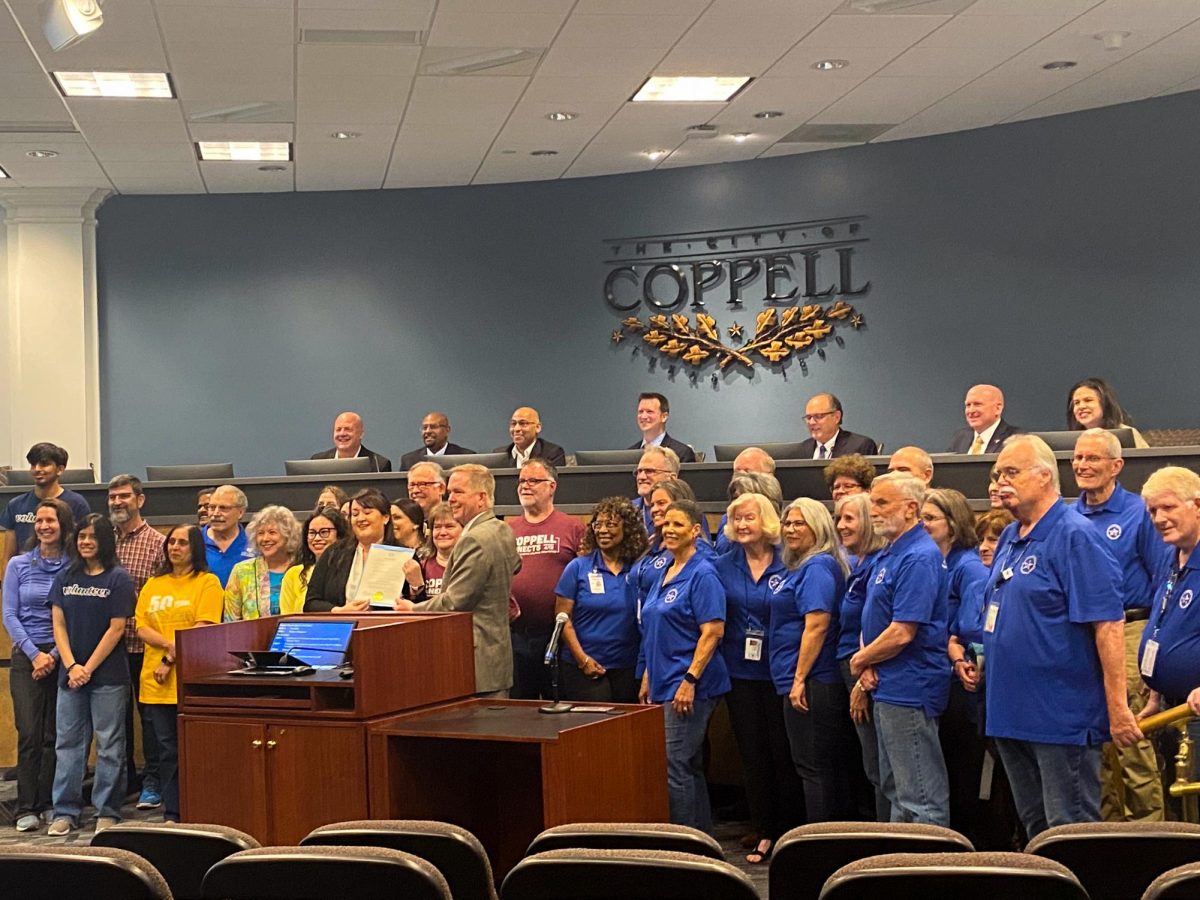It’s a typical Wednesday morning at Coppell High School and the day of an AP English Literature unit test.
CHS English teacher Benjamin Stroud holds 29 test copies. Little more than half his students sit waiting with a pencil and scantron sheet.
“It’s just so frustrating,” Stroud said. “There is a pattern of the same students who miss class on test day and get away with it.”
Under the Texas Education Code, school districts receive funding from the state based on the district’s average daily attendance (ADA). ADA measures the average number of students attending school on a day to day basis, calculated by dividing the total number of students in attendance each day of the school year by the total number of instructional days within the year.
Administering the policies of the Texas Education Code, the Texas Education Agency (TEA) receives all data regarding districts’ ADA rates from school in six-week reporting periods through the Public Education Information Management System (PEIMS).
At the end of the school year, the TEA determines the annual ADA and defines the state funding allocation the district receives. According to the Coppell ISD 2022-23 budget book, state funds account for approximately 10% of the total district revenue funds.
The other 90% of financing comes from local civilian taxes, such as the Robin Hood Tax and interest earnings (89%) and federal sources from School Health and Related Services (SHARS) (1%).
Through the calculated ADA, a per pupil allotment is calculated by dividing the total amount of funding available by the number of students attending school. The per-pupil amounts vary for students amongst different school levels. Per the Coppell ISD 2022-23 budget book, the per-pupil amount was $94.61 per elementary student, $123.23 per middle school student and $157.54 per high school student.
According to CISD director of student systems Kathy Creek, the district is compensated about $50 for each student that is present each day.
Every absence is a loss of funding the state provides to the district. CISD director of communication Amanda Simpson said each percent decrease in daily attendance leads to an estimated loss of $900,000.
“If you think about it, it is 13,000-plus students times $50 a day, times 170 instructional days which is the amount of days we had last year,” Creek said. “If attendance drops by even 1%, it is pretty significant.”
A rate of 97% or higher indicates that the district is in good standing for attendance rates and for funding. CISD had been maintaining its attendance in this percentile until the rise of COVID-19, chief financial officer Diana Sircar said.
In 2019, the ADA in CISD was 96.7%. In 2022, after the COVID-19 lockdown and CISD virtual learning, the ADA fell to 95.4%. As of 2023, the percentage has dropped to 95.6%, a loss of approximately $1,000,000 of funding.
“Since we were remote during the pandemic, our attendance rate has not been an apples to apples comparison” Sircar said. “It was higher during the pandemic, because people were remote.”
With less than 2% annual change in enrollment since 2017, the flattening of enrollment rates in CISD affects the district’s ADA, further lowering funds received from the state.
“When you’re a growing district, it doesn’t seem as concerning, because your population is growing,” Creek said. “Our population is flattening right now and that means that every day of attendance matters.”
With inflation, the cost of resources has risen to a rate of 9.1%, the highest since November 1981, according to the CISD 2022-23 budget. TEA funding has not reflected any inflationary adjustments changes to ADA since 2009.
“Our allotment per student has not changed in many years and we need to keep a base with inflation,” CISD Board of Trustees president David Caviness said. “Our needs for our teachers and supplies are costing us more, it takes money out of our classrooms.”
Whether a student brings a note or not to excuse themselves, their absence affects the compensation the district receives.
“You could afford to give me one absence, but when I end up having 250 kids out on a given day, then I have just lost funding for 250 of our kids for that day,” CHS Principal Laura Springer said.
CISD posts its full-length calendars two years in advance for every school year to ensure families are aware of the set dates for any holiday breaks or special days.
“While your family takes you on a road trip, every day you’re going on that trip counts against us for attendance,” Springer said. “We give you plenty of notice on when we have district holidays.”
Beyond its impact on school funding, unnecessary absences result in the waste of resources, educational opportunities and state funds. When students are absent and fail to utilize these resources, it hinders class productivity and efficiency.
“Absences affect everyone in the classroom, not just the students or the teacher,” said Coppell Middle School West registrar Shannon Olmstead, who is also a district parent. “If a student is absent, the teacher is still present and the services are still paid from CISD. But CISD is not receiving funding from Texas for that student.”
This affects the overall learning environment of the classroom. Each absence is a loss in social and academic benefit for both the students and their classmates.
“When the student returns, it’s a group effort to get them up to speed, and it takes time for the teacher and classmates,” Olmstead said.

In the broader picture, a decrease in attendance rate affects the development of students on the day they miss. The time teachers and classmates spend making up for the absent child pushes back the curriculum and incentivizes future absences and setbacks.
“We require students to go to school because it’s a net benefit for all of society,” CHS IB Psychology and Economics teacher Jared Stansel said. “It hurts our student body’s financial capital that could otherwise afford them learning resources that would have enhanced their learning.”
TEA measures school funding through the academic expanse. Student absences imply that the services that were provided were not accounted for and that the student did not experience any academic growth.
“Your attendance notes are like our receipts for the state to prove that they should pay us,” CHS attendance office aide Amy Praytor said. “The state says you have to be in class 90 percent of the time, if not, you were not there enough times to get the information you should have gotten.”
With COVID-19 introducing online learning, students now take days off more often with the intention of keeping up through online resources.
“Our attendance was phenomenal until COVID,” Springer said. “After COVID, we got used to laying in the bed.”
However, learning online while the class is in person can lead to a lower grasp of academic topics and limitation of social interactions.
“We can’t afford for students not to be in school because it kills us financially for students not to be here,” Springer said. “Plus, I want students to get a good education, students can’t get a good education when they’re not sitting in the classroom and learning.”
Often, students rationalize their absences by taking days off for mental health. Students also might take it further, taking absences when they have a test that they do not feel prepared for.
“It would have been better to just go ahead and fail the assessment so as to not miss out on other educational experiences, social experiences and to avoid the stress and anxiety of the feelings of falling behind,” Stansel said.
However, many students think mental health and personal comfort should be accounted for when taking assignments that critically measure performance.
“It is really valid to just take a day off and designate time to focus on your mental health,” CHS junior Anushka Joshi said. “School can be something that is draining and stressful, and it is understandable to take a day off and just recharge. Your health should come first, including mental health.”
However, some students avoid missing tests as it sets them behind with coursework.
“I hate when I miss tests, I just want to get it over with,” CHS senior Su Dikilitas said “However, you can’t really control what’s going on in your life and it can really affect your performance on tests.
Absences do not have to be excuses, for students working on tight schedules and deadlines may warrant a reflective day off to catch up on schoolwork.
“I have taken absences before, because school is often overwhelming,” CHS junior Larry Liu said. “School is so fast paced and sometimes after a long week, you get burned out. Sometimes you have to find your own pace instead of the pace your teacher forces you to follow.”
Until 2019, CISD had mandatory final exams at the end of each semester. The policy stated that if a student has less than a set amount of absences in a class they could be exempt from that exam. Now that the system is no longer in place, students at CHS lack motivation to maintain minimum attendance, taking advantage of the ten absences allowed until truancy.
“Is there a medical happening standing in the way of you coming to school?” Springer asked. “Are your parents divorcing? Those are types of things we figure out to help students beat truancy charges, if none of those hardships are there, you’re just not coming to school.”
To mitigate absences and raise the attendance rate to a goal of 97%, CISD is in the midst of a 12-week attendance campaign. Posting attendance incentive graphics every Thursday and Sunday on the CISD website, newsletters and social media accounts, the district aims to raise awareness among community members of the importance of maintaining attendance.
“We felt that it was important to inform our community about how important attendance is,” Simpson said. “We are not saying that you should go to school if you are sick, we also realize there are mental health reasons that can cause an absence, and we want the community to know that there is support for that. Attendance is important in particular to learning and if you miss a couple of days a month, you can miss a lot.”
Follow @CHSCampusNews, @sahasrchak24 and @aliza_abidi on X.













